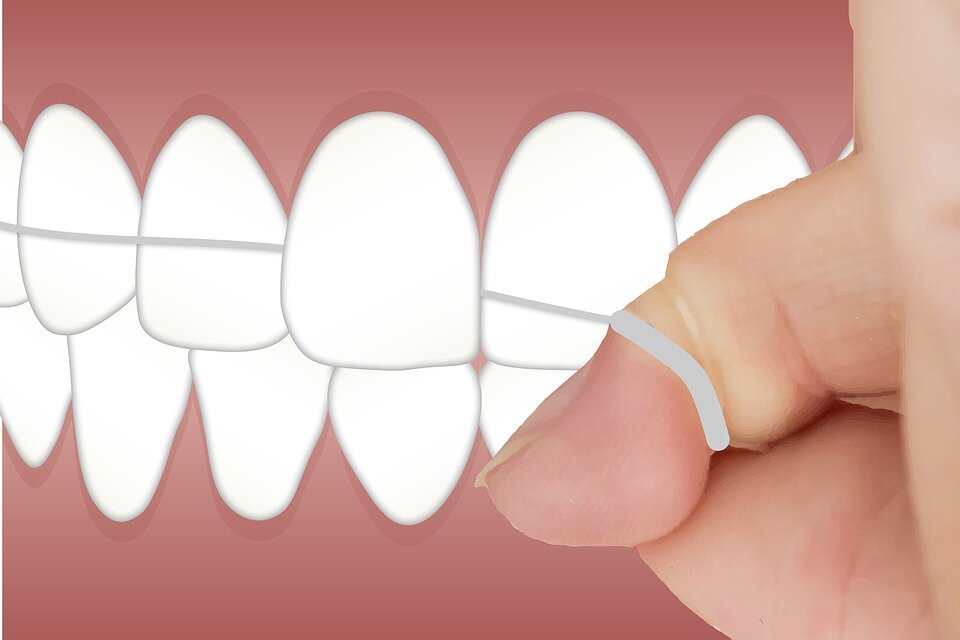In several ways of your life, straight, strong teeth are essential. Beautiful and healthy teeth help increase your trust. It also protects you against the development of severe oral diseases.
To seek orthodontic treatment is the best approach to correct all tooth defects. You could have heard about Invisalign special McKinney TX when you think about ways to straighten and strengthen your teeth.
But what exactly is this procedure, and how does it differentiate between braces?
Keep reading our guide to learn about the benefits of Invisalign and why you should consider it.
Invisalign, What is It?
What is Invisalign, then, exactly, and how does it work? The indication is on behalf of it. Invisalign is a revolutionary process for straightening crooked teeth, involving the use of an invisible aligner.
Invisalign has more advantages and features than regular metal braces. It leads more and more people to use traditional methods of teeth straightening.
Do you want to discover some of Invisalign's most impressive advantages?
It is Quite Discreet.
One of the reasons why many people choose Invisalign is that it is more discreet than conventional braces. Indeed, it's so sensitive that it's invisible!
The orthodontic system has transparent, almost visible plastic alignments. So you can feel confident and relaxed knowing that no one will see that you wear aligners when you wear them.
It's Very Convenient.
Everybody knows the discomfort and the pain regular braces can have and the damage to oral soft tissues that they can cause. Invisalign does not have this problem.
Invisalign is much more comfortable and gentle to your gums and teeth. You won't experience any pain or damage. Because Invisalign is custom-made and uses only soft plastic instead of sharp metal, your mouth will feel much more protected.
Their customization also means that each of your teeth will follow a slow, controlled, and gradual adjustment. It means that the overall process will feel more comfortable than standard braces.
It is Suitable
Comfort is another major factor in the choice of Invisalign rather than metal braces. You can finally return to all of your favorite foods and drinks using a removable aligner such as Invisalign.
While eating or drinking, immediately remove your Invisalign. When you're ready to put them on again, give it a quick wash in warm water. Easy, okay?
On the other hand, standard braces make it more complex and often more painful to eat. Dentists will often tell you what to avoid using metal braces to eat and drink. It could limit your decisions and make the whole process more frustrating and less enjoyable.
It is Adequate.
Convenience is yet another essential factor in Invisalign's choice of braces. Finally, you can return with a removable aligner such as Invisalign to all your favorite food and beverages.
Immediately remove your Invisalign while eating or drinking. Please give it a washing-up in warm water when you're ready to put it again. Simple, all right? All right?
Standard braces, on the other hand, make it more complex to eat and often painful. Dentists often say what you need to avoid eating and drinking with metal braces. It could restrict your decisions and frustrate the entire process and make it less fun.
Invisalign gives you control over what is placed on your plate while giving your teeth more attention.
Brushing is Much Easier Than Bracing.
Think about it again if you thought Invisalign would only simplify your food and drink.
It does not have the advantages of food and drinks alone. Invisalign makes it easier, safer, and more comfortable to brush your teeth against regular braces.
You find it difficult to pin your teeth properly with metal braces. However, you only have to remove your aligners with Invisalign and brush your teeth as usual. Not only does Invisalign make your teeth smooth, but it also helps you to better look after your oral hygiene.
Invisalign gives you power beyond what you put on your plate while paying more attention to your teeth.
It is Much Easier to Brush Than to Strain.
Think again if you felt that Invisalign would only make food and drink simpler. The advantages of food and drink alone are not there. Invisalign makes brushing your teeth against regular braces easier, safer, and more comfortable.
It's not easy to put your teeth on metal braces correctly. However, only Invisalign must be removed, and you can brush your teeth as usual. Invisalign not only makes your teeth smooth but also helps you to look after your oral hygiene better.
It Enhances Your Confidence
The main reason you need to wear your brace, of course, is based on your health. Aesthetics are nevertheless also essential to start such a treatment. That's right.
Straighter, stronger, and shining teeth are becoming more appealing. It in turn, gives you more self-confidence and confidence.
Many people, however, continue to look for orthodontic therapy to fix crooked teeth. Why? It's because wearing metal braces is all too unpleasant.
That’s why Invisalign is becoming so loved and popular. It helps people achieve better teeth without the unattractive (and uncomfortable) addition of metal braces.
It Helps Prevent Potential Future Issues
Invisalign cares for your teeth today and helps to protect you from potential issues tomorrow. This type of orthodontic treatment can be beneficial to prevent dental problems in the years to come.
We mainly refer to gum disease, tooth loss, and tooth decay, which are often the result of poor oral hygiene. By enabling you to enhance your oral hygiene, Invisalign contributes to overall better dental health for life.
That’s why Invisalign is so successful and popular. Without an uneasy (and uncomfortable) addition of a metal strap, people can get better teeth.
It Helps Avoid Possible Issues for The Future
Invisalign takes care of your teeth today and helps to protect you tomorrow from potential issues. This kind of orthodontic treatment can be beneficial in the years to come to prevent dental problems.
We refer mainly to gum disease, tooth loss, and tooth decay, often due to poor oral hygiene. By improving oral hygiene, Invisalign helps to improve dental health overall for the future.
It's Very Successful
In addition to all these incredible benefits, you might still wonder whether Invisalign is working. Well, that doesn't only work in a short timeframe.
Your Invisalign will be fully adapted for your dental structure. Due to this, dental visits are less and less invasive. That's another big reason why Invisalign is the winning choice over regular braces.
Ready to Explore All the Benefits of Invisalign
After reading about all the incredible benefits of Invisalign, you should no longer be on the fence about whether or not to get this treatment.
Choosing Invisalign over standard braces is a comfortable, quick, and non-invasive way to strengthen and straighten your teeth.
Would you like more information on how to start your Invisalign treatment? Or, have you decided that you would like to get started as soon as possible?
Either way, do not hesitate to contact us. We will be happy to guide you through the process and get your treatment started.
Willing to Discover Invisalign's Advantages?
You should no longer be on the verge of seeing after reading about all the incredible benefits of Invisalign. Invisalign is a comfortable, fast, and non-invasive way of strengthening and straightening your teeth through standard braces. Want to find out more about starting your treatment with Invisalign? Or did you decide to get started as quickly as possible? Never mind contacting us anyway. We will be glad to guide you through the process.






